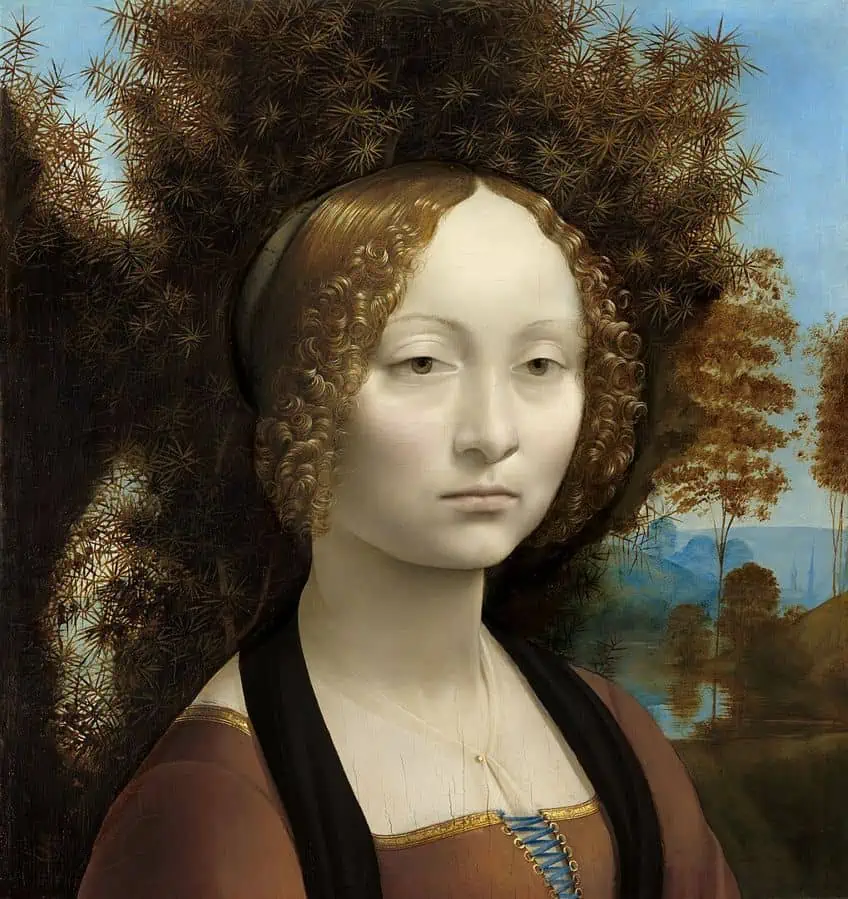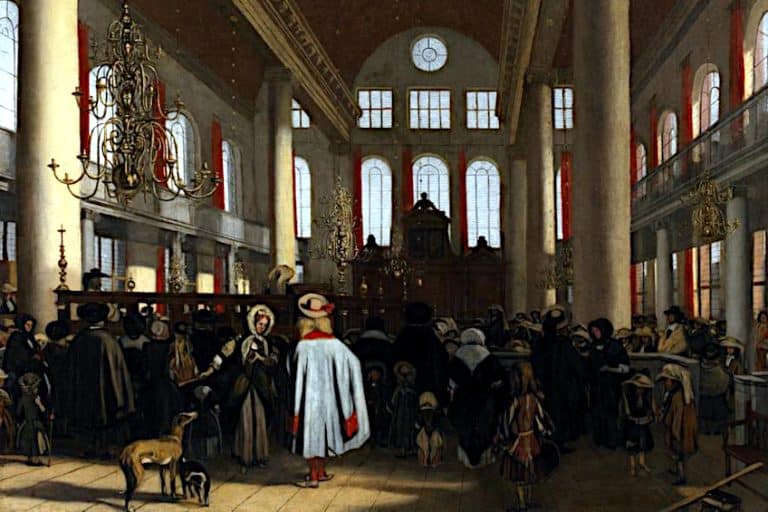Representational Art – Communicating the World Through Art
This post may contain affiliate links. We may earn a small commission from purchases made through them, at no additional cost to you.
Most art throughout history has been representational. Because of its accessibility, representational art is widely accepted among the masses. Whether it is a painting, drawing, or sculpture, subjects are easily identifiable in representational art. However, even when it is representative of something, art can be symbolic or non-figurative.
Table of Contents
The Relational Appeal of Representational Art
Around the 19th century, movements like Romanticism, Impressionism, and Expressionism influenced the emergence of abstraction in art. Artists became less interested in realistic depictions. But there is often no clear dichotomy between representational and abstract art. Some artworks are more realistic while other representational art is stylized through the artist’s hand. Today, most representational art veers towards abstraction.
 Valencian Fisherman (1895) by Joaquín Sorolla; Joaquín Sorolla, Public domain, via Wikimedia Commons
Valencian Fisherman (1895) by Joaquín Sorolla; Joaquín Sorolla, Public domain, via Wikimedia Commons
What Is Representational Art?
The representational art definition describes works of art that represent recognizable objects or figures. There are various types of representational art, which can also be referred to as objective, figurative, or naturalistic art. Most of the time this term applies to paintings and sculptures with references derived from the real world. Common examples of representational art include portraits, traditional still lifes or landscapes, paintings of everyday scenes, and equestrian, mythological, or historical paintings.
However, representational art need not be completely realistic and often has varying levels of abstraction.
Non-Representational Art Definition
Non-representational art is the most extreme form of abstraction. Unlike representational abstract art, non-representational art makes no clear reference to the natural world. It does not depict a person, place, or thing. Non-representational art is also known as non-figurative or non-objective art. The non-representational art definition tends to be more concerned with materiality and subjectivity. This means that non-representational art focuses on formal issues such as line, shape, color, pattern, or texture rather than pictorial imagery. Non-representational art is often expressive and depends on the viewer’s interpretation.
 The Blue Rider (1903) by Wassily Kandinsky; Wassily Kandinsky, Public domain, via Wikimedia Commons
The Blue Rider (1903) by Wassily Kandinsky; Wassily Kandinsky, Public domain, via Wikimedia Commons
A Brief History of Representational Art
Representational art can be seen in most ancient art forms with examples as early as the Stone Age (c.2,000,000 – 10,000 BCE). Ancient rock art from across the world consists of representational drawings depicting hunters, animals, rituals, and human-animal hybrids. Examples of ancient representational artworks also include sculptures like the Venus of Berekhat Ram (280,000-250,000 BP) in Israel, the Venus of Tan-Tan(500,000-300,000 BP) in Morocco, and the upper Paleolithic Venus of Willendorf (c. 25,000 BP) in Austria.
Greek and Roman art (c.650 BCE – c.350 CE), otherwise known as Classical Antiquity laid the foundation for the Italian Renaissance (c. 1300 – 1527), which has since had a significant impact on most artists. Examples of representational artworks in Classical Antiquity could be found in decorative friezes, reliefs, sculptures, and busts. Although these depictions were often idealized, they featured recognizable subjects such as athletes and gods.
Artists of the Italian Renaissance like Leonardo Da Vinci, Donatello, and Michelangelo continued the trend of creating realistic albeit idealized paintings and sculptures.
The human form was regarded as the pinnacle of creative expression, and figures were often depicted in the nude. By the 19th century, artists began experimenting with representation. Despite the enduring influence of the Italian Renaissance, the dawn of the Industrial Revolution (c.1790 – 1850) birthed artistic movements such as Realism, which preferred to represent the reality of everyday life rather than the idealized version. Moving away from traditional portraits, still lifes, landscapes, and religious subjects, artists explored subjects that were pertinent to the Industrial Revolution.
 Waterloo Bridge (1903) by Claude Monet; Claude Monet, Public domain, via Wikimedia Commons
Waterloo Bridge (1903) by Claude Monet; Claude Monet, Public domain, via Wikimedia Commons
Arguably, the greatest influence on representational art was the invention of the camera, followed by the invention of cinema. As the camera could produce more accurate images, more efficiently and more affordably than any painter could, artists began to look inward. The first group of artists to do this decisively were the Impressionists (1867 – 1886). Their engagement with paint and the expressiveness of their brush strokes was no longer intended to convince viewers that they were observing accurate depictions of real life.
While they still placed great importance on traditional representational drawing skills, color, and composition, the Impressionists wanted to capture time, space, and the effect of light in a still image, rather than make it appear real. These concepts went on to influence 20th-century artistic movements such as Cubism (1907 – 1914) and are still at play today.
Examples of Representational Artworks
Representational artists generally operate as observers. Their ultimate goal is to reproduce reality as they see it. Since the Impressionists, these reproductions often involve artistic interpretation. In this way, even if they are observing the same scene, no two painters are likely to produce identical paintings.
 Ginevra de’ Benci (c. 1474–1480) by Leonardo da Vinci; Leonardo da Vinci, Public domain, via Wikimedia Commons
Ginevra de’ Benci (c. 1474–1480) by Leonardo da Vinci; Leonardo da Vinci, Public domain, via Wikimedia Commons
Still Life with Skull (Nature morte au crâne) (1890 – 1893) by Paul Cézanne
| Artist | Paul Cézanne (1839 – 1906) |
| Date | 1890 – 1893 |
| Medium | Oil on canvas |
| Dimensions (cm) | 54.3 x 65.4 |
| Where It Is Housed | Barnes Foundation, Pennsylvania, United States |
Paul Cézanne’s Still Life With Skull (1890-1893) shows a distorted perspective of a table on which a skull and fruit are placed, a peach and plate are tilted, a green pear sits at the very edge of the table, and a human skull is placed on a roughly folded piece of white cloth. Though the scale differs between the objects, the circular forms of the strewn fruit are echoed by the curvature of the skull.
This painting is a classic memento mori tableau with its human skull and rotting fruit, yet it strikes a precarious balance between representation and abstraction.
 Still Life with Skull (Nature morte au crâne) (1890 – 1893) by Paul Cézanne; Paul Cézanne, Public domain, via Wikimedia Commons
Still Life with Skull (Nature morte au crâne) (1890 – 1893) by Paul Cézanne; Paul Cézanne, Public domain, via Wikimedia Commons
The outlines of the fruits are dark and exaggerated. On the right, a blue color field barely covers the white of the canvas. Still Life With Skull also pushes the limits of the medium by breaking the rules of conventional perspective in art. These expressive touches demonstrate that though this representational artist had no interest in precisely reproducing reality, he had a knack for portraying recognizable objects in unpredictable ways. Like most Modernist painters Cézanne recognized that painting had to embrace the challenge of adequately representing the depth and contours of space. Cézanne’s Still Life with Skull helped introduce new styles of representational art and, therefore, new ways of seeing.
Nude Study of Thomas E. McKeller (1917 – 1920) by John Singer Sargent
| Artist | John Singer Sargent (1856 – 1925) |
| Date | 1917 – 1920 |
| Medium | Oil on canvas |
| Dimensions (cm) | 125.7 x 84.4 |
| Where It Is Housed | Museum of Fine Arts Boston, Massachusetts, United States |
Nude Study of Thomas E. McKeller is one of the numerous male nudes painted in the later part of John Singer Sargent’s impeccable career. This oil on canvas work portrays a subject that contrasts dramatically with the mainstream and reserved subjects of his better-known portraits. This representational painting is a nude study of a Boston hotel elevator operator called Thomas E. McKellar.
Of course, this is an example of representational art, because we recognize McKeller and his intimate surroundings.
 Nude Study of Thomas E. McKeller (1917 – 1920) by John Singer Sargent; John Singer Sargent, Public domain, via Wikimedia Commons
Nude Study of Thomas E. McKeller (1917 – 1920) by John Singer Sargent; John Singer Sargent, Public domain, via Wikimedia Commons
Typically, Sargent’s portrayal is almost academic in its commitment to representation. But other than the incredibly naturalistic figure, Sargent has certainly taken artistic liberties with this work of art and introduced elements of abstraction. The subtle, yet dramatic technique in Nude Study of Thomas E. McKeller seems personal. The subject’s muscular, strong, beautiful body is treated with intricate delicacy. Sargent’s depiction of the stone wall behind his subject evokes a glowing white light, which comes across as a halo and a shadow of feathered wings. This gives McKeller an essence of being between a mortal and a god.
Non-Representational Art Examples
Non-representational art is commonly thought of as a relatively recent invention. It is not thought to have emerged until the early 20th century. Rather than observe and reproduce reality, non-representational art examples are not strictly associated with any real object.
They are more cerebral or emotional and require interpretation from the viewer.
Composition 8 (1923) by Wassily Kandinsky
| Artist | Wassily Kandinsky (1866 – 1944) |
| Date | 1923 |
| Medium | Oil on canvas |
| Dimensions (cm) | 140.3 x 200.7 |
| Where It Is Housed | Solomon R. Guggenheim Museum, New York City, United States |
Wassily Kandinsky’s Composition 8 (1923) is a fantastic non-representational art example. Though the painting depicts colorful, interactive geometric forms there are no recognizable objects or figures related to the natural world. Typical of modern art, Composition 8’s sequential title places it in an abstract context, aligning it with notions of the progression of time and the expansion of space.
 Composition 8 (1923) by Wassily Kandinsky; Wassily Kandinsky, Public domain, via Wikimedia Commons
Composition 8 (1923) by Wassily Kandinsky; Wassily Kandinsky, Public domain, via Wikimedia Commons
Because of its orientation, Composition 8 is reminiscent of a landscape. The artwork features straight and curved lines, circles, grids, rectangles, semicircles, triangles, and other geometric forms. The lines have different types and thicknesses, and they overlap, creating a dynamic surface that feels simultaneously balanced. The cream-colored background melds into lighter and darker tones at certain points. The dynamic placement of the geometric shapes reflects Kandinsky’s belief in their mystical properties and his use of color demonstrates his knowledge of their emotional impact.
Even though the extreme abstraction in this painting consists of a mere assortment of lines, colors, and shapes, Kandinsky may have intended this composition to represent an actual object, figure, or scene.
Untitled Blue Monochrome (IKB 82) (1959) by Yves Klein
| Artist | Yves Klein (1928 – 1962) |
| Date | 1959 |
| Medium | Dry pigment in synthetic resin on canvas, mounted to board |
| Dimensions (cm) | 92.1 x 71.8 |
| Where It Is Housed | Solomon R. Guggenheim Museum, New York City, United States |
Although they are the perfect non-representational art example, Yves Klein’s monochromes are representations of what the artist believed to be a mystical place. This Klein space existed beyond traditional concepts of space and time. His monochromes were physical manifestations of invisible cosmic energy, which permeates our daily lives. Klein began his series of “Monochromes” for which he used a specific ultramarine blue in 1955. The color was eventually patented as International Klein Blue (I.K.B.) in 1960.
 Untitled Blue Monochrome (IKB 82) (1959) by Yves Klein; No machine-readable author provided, Public domain, via Wikimedia Commons
Untitled Blue Monochrome (IKB 82) (1959) by Yves Klein; No machine-readable author provided, Public domain, via Wikimedia Commons
The entire canvas is covered in this powdery ultramarine pigment by which he became mesmerized during a trip to Italy in 1948, which exposed him to the bright blue frescoes in the Basilica of Assisi. This blue emerged during the Italian Renaissance and was produced from expensive lapis lazuli powder. As this legacy was the inspiration behind Klein’s initial monochrome paintings, Untitled Blue Monochrome (IKB 82) is drenched in an air of rich historical tradition. Klein’s use of this specific shade of pure ultramarine blue is exclusive and strikingly resonant. The intriguing texture and monochromatic field of intense color in Untitled Blue Monochrome (IKB 82)’s surface radiate outwards. While the work is a physical manifestation of what Klein called a “window to freedom”, it is not representational art.
Klein intentionally abandoned representation to induce the psychological effect of immersion and an engulfing experience of color.
Art Imitates Life
While the representational art definition is not complicated, representation entails more than just portraying objects or figures realistically. It involves issues of perception, perspective, and subjectivity. It even raises questions about what reality is and whether it can truly be reproduced. Even in an age where most people have access to cameras, the majority of which are portable and inexpensive, creating artistic representations of real-life objects still seems worthwhile.
 The Bedroom (1889) by Vincent van Gogh; Vincent van Gogh, Public domain, via Wikimedia Commons
The Bedroom (1889) by Vincent van Gogh; Vincent van Gogh, Public domain, via Wikimedia Commons
While representational art has remained the same in that it still portrays recognizable subject matter, it has gone through many phases and movements. From the public’s perspective, representational art is more accessible. On the contrary, non-representational art requires considerable insight on the viewer’s part. Though this prerequisite can create barriers between artists and the public, representational art has its limitations.
Representational art today is an imitation of life, but it seldom attempts to make itself look life-like. Though we no longer need the ability to draw, paint, or sculpt to capture our environment, we still wish to. Since the late 19th and early 20th century, this desire has been reinforced by artistic explorations of personalized representations of the world. Through individualistic expression, the artistic touch offers something that photography or cinema never can.
Frequently Asked Questions
What Is the Difference Between Representational, Abstract, and Non-Representational Art?
When asking what representational art is, it is important to understand that there is no clear distinction between representation and abstraction. Representational abstract art can depict objects in a manner that might be exaggerated, simplified, or stylized. Artists may use geometric shapes or arbitrary colors to place their artwork somewhere within the spectrum between representational and non-representational art.
What Is Another Term for Representational Art?
Because they both describe artworks that have been copied from real life, representational art can sometimes also be referred to as figurative art. However, while figurative art is a subcategory of representational art, it specifically defines art that portrays the human form.
What Is the Earliest Non-Representational Art Example?
After excavating the famous Blombos Cave in South Africa, archaeologists found the earliest non-representational art example ever found, which dates back 73,000 years. The artifact features crisscrossing lines drawn on a silcrete stone in red ocher crayon.
Were the Impressionists Representational Artists?
Yes, as most Impressionist painters used simplified forms and loose brushwork in their artworks, which were often far from realistic. However, since their depictions were still recognizable, they can be classified as representational abstract art.
In 2005, Charlene completed her wellness degrees in therapeutic aromatherapy and reflexology at the International School of Reflexology and Meridian Therapy. She worked for a company offering corporate wellness programs for several years before opening her own therapy practice. In 2015, she was asked by a digital marketer friend to join her company as a content creator, and it was here that she discovered her enthusiasm for writing. Since entering the world of content creation, she has gained a lot of experience over the years writing about various topics such as beauty, health, wellness, travel, crafting, and much more. Due to various circumstances, she had to give up her therapy practice and now works as a freelance writer. Since she is a very creative person and as a balance to writing likes to be active in various areas of art and crafts, the activity at acrylgiessen.com is perfect for her to contribute their knowledge and experience in various creative topics.
Learn more about Charlene Lewis and about us.







